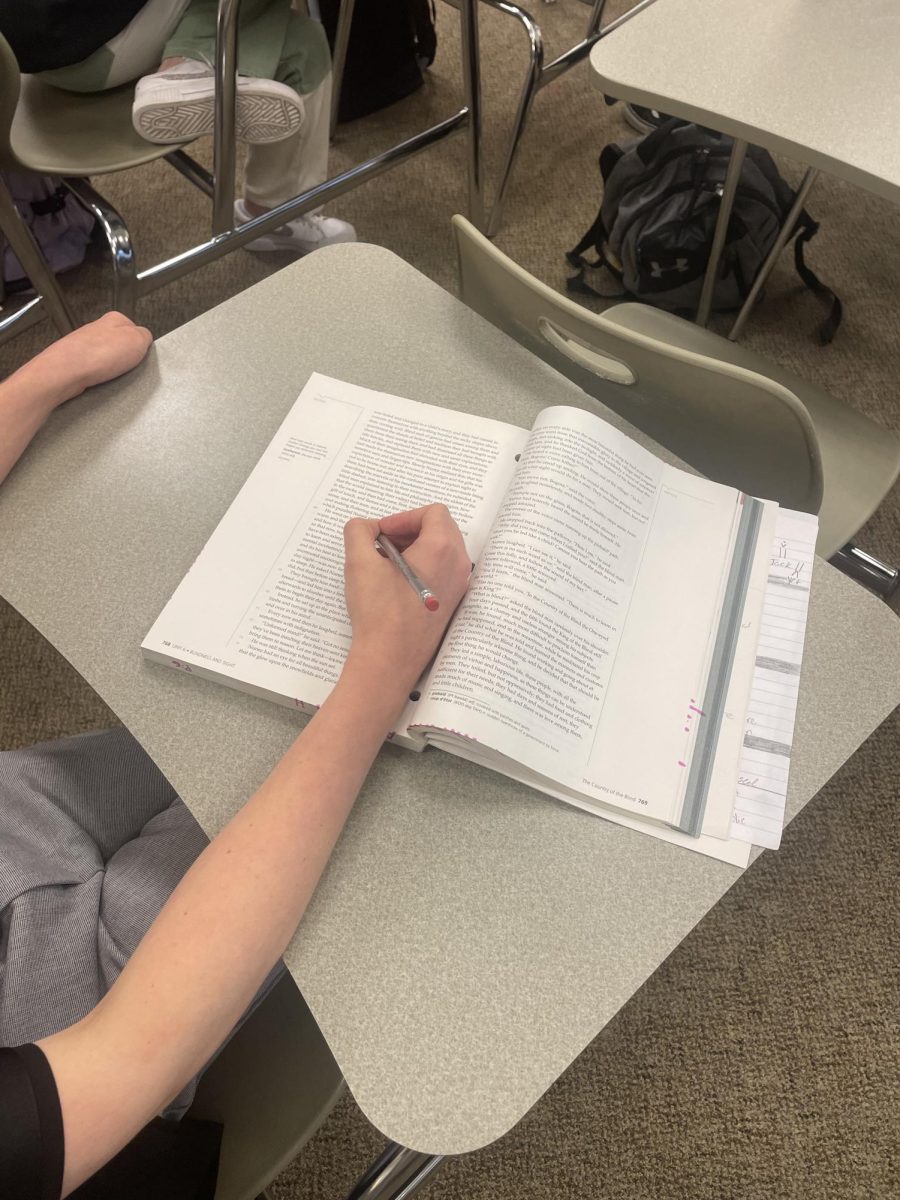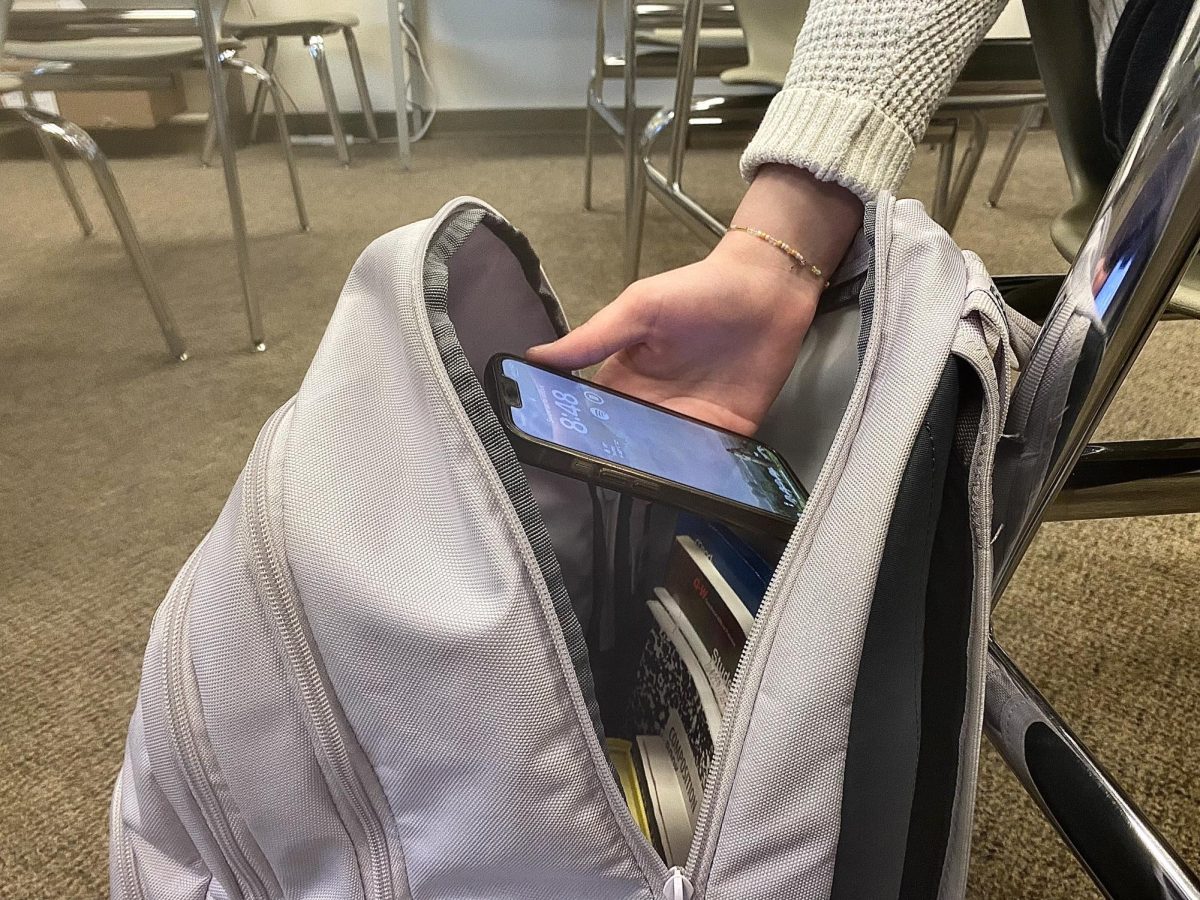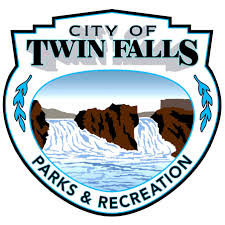At the beginning of the 2023-2024 school year, secondary English Language Arts teachers across the Twin Falls School District were given textbooks to incorporate into their classrooms to guide their instruction. This was a directive from the District Office. The textbooks cost $1.5 million which was paid from Elementary and Secondary School Emergency Relief (ESSER) funds left over from COVID. The school board and a committee ultimately decided to purchase the myPerspectives textbook and partner with Savvas, an education curriculum company, for the next seven years.
“At first, I was not excited because I wasn’t a fan of the last curriculum we adopted for the language arts department at the middle school level. However, I saw Kelly Gallagher was one of the four experts who helped design the myPerspectives textbook. I have enormous respect for him,” said Ms. Whitney Moses, a language arts teacher at South Hills Middle School.
“I was excited about the purchase of a new textbook. It was a little overwhelming at first, but being able to work with the book has made me feel better about how to guide students to pick out important parts in the book,” said Ms. Allison Martens, an English teacher at Canyon Ridge High School.
According to the District Office, discussion regarding updating the textbooks began three years ago since the textbooks haven’t been updated since 2009. There was close to $2 million available from ESSER funding for COVID relief. Originally, the school board was only going to sign a six-year contract with Savvas; however, they also knew it would take several years to recoup that money to purchase new textbooks, so they decided to purchase a seven-year contract with Saavas instead.
By Idaho State Law, any committee responsible for choosing new textbooks must be made up of at least half non-educators. That could mean business owners, parents, etc. The school board chose parents to make up this half of the committee with TFSD staff members making up the other half of the committee. The State approves seven or so companies that school boards have to choose from. From there, the school board and the committee go through all options before narrowing the choices down to the best option. The committee then submits its recommendation for textbooks to the school board which approves and orders the textbooks.
“I wanted to be part of the textbook adoption committee because I wanted to see what we were looking at and help make an informed decision about the books,” said Ms. Anna Rill, CRHS English teacher.
Dr. Erickson, TFSD Director of Secondary Programs, explained that the goal for the new textbooks is to have a more uniform way of teaching the English curriculum. For example, if a student were to transfer from Twin Falls High School to Canyon Ridge High School halfway through the year, they would pick up exactly where they left off in their other English class.
“I think it is important that our school and our district is more aligned with what we are teaching. However, I am not sure that this textbook was the way to make that happen,” said Mrs. Kinnedy Guter, a language arts teacher at Robert Stuart Middle School.
“I like that the textbook provides cohesive and thematic units, as well as a variety of literature and types of literature. The photograph collections within the textbook have sparked some awesome conversations,” said Mrs. Traci Rodriguez of Twin Falls High School.
In a recent Riverhawk Review poll that polled TFSD English/ELA teachers, 57% of respondents said that they have not noticed an improvement in their teaching instruction. Instead, the 57% have noticed that the quality of their instruction has mostly “stayed the same” since the implementation of the textbooks. About 28% of teachers responding did say that their teaching instruction “improved somewhat”. The other 14% of respondents said that their teaching instruction either “worsened somewhat” or “suffered greatly” since the implementation of the textbooks.
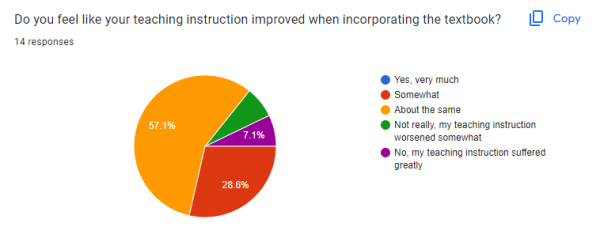
Additionally, most teachers feel that their students’ overall learning has not improved significantly, if at all. Again, about 57% of teachers polled said, generally speaking, their student’s quality of learning has “stayed about the same” since the implementation of the textbooks. Only 28% of teachers polled said that the textbooks “somewhat improved” the students’ learning, and the other 14% said that the students’ learning suffered “somewhat” or “greatly” since the implementation of the textbooks.
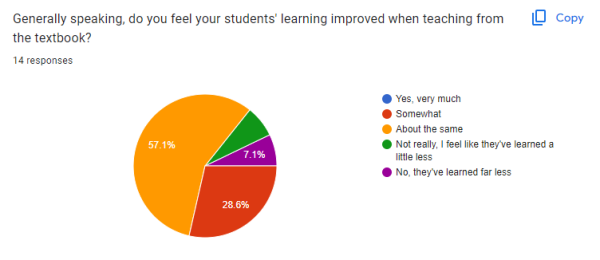
Despite about a week of training the teachers underwent in the fall, 50% of respondents still feel they have not been adequately trained to fully incorporate the textbooks and online components in their classrooms. Just over 42% of teachers responding said they were trained “somewhat” adequately, and only about 7% said they have been adequately prepared to fully incorporate the textbooks and online components in the classroom.
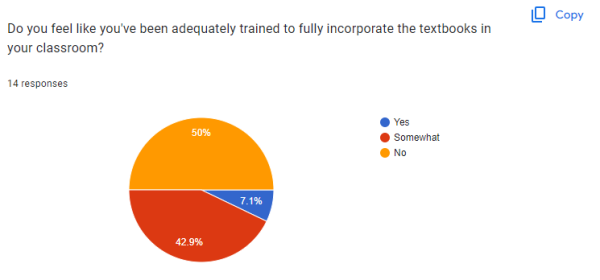
The District office originally intended for the textbooks to be used often in classrooms, but almost 80% of teachers would prefer to only occasionally teach out of the textbook. Just over 21% said they would never choose to use the textbook, and no teacher said they would choose to use the textbook “all of the time.”
There are many mixed emotions within the teaching staff regarding the textbooks. There are some teachers such as Ms. Whitney Moses who is “impressed with the quality of the short stories, poems, excerpts, and articles. They are diverse and engaging,” but feel that the worst quality of the textbooks is that, “it can become a dull routine, devoid of the teacher’s unique passion for teaching lessons that they care deeply about.”
Not all teachers in all grades feel the same way about the reading selections, though. “The writing routines are genuinely effective. The literature choices are terrible! Good luck getting a 15-year-old to actually engage with ‘Metamorphosis’. Even college kids struggle to stay awake reading the same selections. For students to be able to get something out of what they’re reading, the literature needs to be accessible and relevant in some way,” said Ms. Andrea Carr of Magic Valley High School.
With most respondents, every benefit of the textbook is coupled with a cost. “I also like that the tests online give clear feedback as to where in the standards our students might need more guidance on. However, the user interface for the digital book can be confusing and at times frustrating,” said Ms. Allison Martens of Canyon Ridge High School.
When asked if it was up to them, no teacher said they would use the textbook “all the time.” Just over 78% of teachers polled said they would prefer to only “occasionally” use the textbooks, and over 21% said they would “never” use the textbooks if it were up to them.
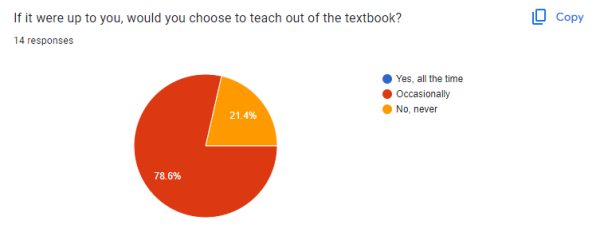
“There is nothing wrong with the textbook or the online components. They are good tools. The problem is when textbooks or apps are perceived as more than tools, like scripture,” said Mr. Irish.

